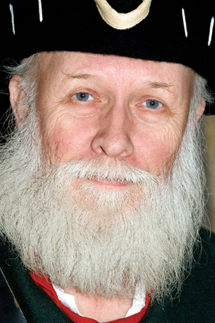Three Carl Zeiss T* Lenses From Sony For The Alpha, And Soon-To-Come Sony D-SLRs; Vario-Sonnar T* DT 16-80mm f/3.5-4.5 ZA Zoom, Planar T* 85mm f/1.4 ZA, And Sonnar T* 135mm f/1.8 ZA
When Sony first unveiled their Alpha D-SLR system in June 2006, the company made a pledge to expand its line of lenses with additional Sony G models as well as some Carl Zeiss lenses. The first three of these products, with a ZA designator indicating Zeiss Alpha, are available at this time, distributed exclusively by Sony. A fourth model, a wide aperture (f/2.8) zoom, should be released in the spring of 2008, according to reliable industry sources. All are compatible with the late Maxxum cameras and future Sony models in the Alpha line.
The ZA-series lenses feature the exceptional T* multilayered coatings, rugged construction, and optical performance of the level expected with Carl Zeiss branded products. The two prime lenses are very large because they feature incredibly wide apertures, useful in low light for faster shutter speeds with less need to use high ISO levels or for unusually shallow depth of field. They're multi-platform models so they are fully compatible with Maxxum 35mm cameras as well as Sony or Maxxum D-SLRs. The
16-80mm zoom features more typical f/3.5-4.5 maximum apertures, and it's quite compact, because this "digital only" lens needs to project only the smaller image circle required by an APS-size sensor.
 |
 |
|
|
||
While I was testing this Carl Zeiss trio using a Sony A100 camera, photographers often asked for specifics as to who actually manufactures the ZA-series lenses. Information of that type is rarely available about any brand and my inquiries produced no definitive answer, although it's clear that the lenses are designed by Carl Zeiss. Neither company would provide additional specifics but a Sony rep offered the following comment: "Every Zeiss product undergoes both visual and MTF inspections before it is packaged and sold. No matter where in the world a Zeiss lens is made, it is always manufactured to the same exacting standards set by Carl Zeiss in Germany and measured using the specialized equipment developed by Zeiss." That statement is confirmed by a Carl Zeiss quality-control certificate that's included with every ZA-series lens. (Editor's note: This is a strange tone for what everyone knows is a globalized economy. Whether the actual production lines are in Germany, Japan, China, or Florida, the quality control is what makes it a good product or not. See: Toyota.)
Of course, the full pedigree of the ZA series is academic since the superlative build quality and optical performance speak for themselves. And as I confirmed during extensive testing, these are definitely pro-grade products, particularly the 85mm and 135mm prime lenses. All three benefit from advanced technology as well. They're autofocus lenses with eight electrical contacts, ROM-IC, and the distance encoder required for the Maxxum/Sony Advanced Distance Integration flash metering.
 |
|
|
Carl Zeiss Prime Lenses
Unusually large (and hence heavy) because of the ultra-wide maximum aperture, the 85mm f/1.4 and 135mm f/1.8 lenses differ in some specifications, but they're virtually identical in build quality, cosmetics, and multilayered coatings on all air-to-glass surfaces. Unique to Carl Zeiss lenses, the T* coatings provide very high contrast and an accurate (if somewhat "cool") color rendition. Particularly when used with their hoods, these lenses are virtually impervious to flare except in extremely strong backlighting. Their external features are identical, too. Both of these very large/heavy lenses include a distance scale, depth of field scale, focusing collar, and a button for locking focus when the camera is set for Continuous AF.
As you might expect considering the price, both are absolutely gorgeous so they drew envious glances from other photographers. But the beauty is not merely skin deep. The lenses are solidly built with all-metal construction so they're intended to last for decades. The extremely wide focusing collar, covered with a finely ribbed rubber, provides a familiar manual focus "feel" with plenty of friction, reminiscent of a classic conventional lens. And finally, both lenses are equipped with a diaphragm consisting of nine blades intended for an attractive "bokeh." In other words, the design provides a nearly circular aperture at most f/stops in order to render defocused background highlights as round for a pleasing visual effect.
 |
 |
||
|
|
It's also worth noting that these lenses are equipped with an Internal Focusing (IF) system that needs to shift fewer elements than conventional designs. Because less mass is moved, focus response can be faster. In my tests, autofocus was fast and precise, though not silent because AF drive is provided by a conventional motor in the camera body. Aside from IF, this performance was enhanced by two features: the wide maximum aperture that allows a great deal of light to reach the AF sensor plus the improved AF drive and algorithms of the Sony A100. Internal focusing produces additional benefits: improved sharpness at close range, constant physical size, and a non-rotating front element. The latter is ideal when using a polarizing or graduated filter in outdoor photography because the effect remains constant as you change focused distance.
Sonnar T* 135mm f/1.8 ZA: Billed as the "brightest in its class," this very hefty telephoto certainly provided a bright view of the subject even in the low light of an indoor arena. It's equipped with two pieces of Extra-low Dispersion (ED) glass, intended to force all wavelengths of light to focus on the film or sensor plane to prevent chromatic aberration (color fringing at the edges of a subject). The technical data also indicates a high level of correction for shading (darkening at the edges). When used with a D-SLR camera, this is a 202.5mm equivalent, because of the field of view crop. That's too long for most studio portraits but fine for use outdoors and in some large interiors; that aspect will appeal to wedding and other event photographers.
 |
|
|
As expected, this Sonnar lens produced stunning image quality at every focusing distance. There's no apparent linear distortion or shading at the corners even at f/1.8. Central sharpness is exceptionally high at f/1.8. In the f/4 to f/11 range, edge sharpness matches central sharpness, providing better image quality than any telephoto zoom lens that I have ever tested. Both contrast and color saturation are high, for a snappy overall effect. Naturally, the depth of field at f/1.8 is extremely shallow. Focus on a nearby person's eyes and the nose and ears will not appear to be sharply focused; that's an optical fact and not a sign of an inferior design.
- Log in or register to post comments

















































